Fashion Design and Costume History in the Library’s Collection
The fashion plates, magazines, photographs, and scrapbooks now on view in the Library display cases complement two exhibitions: Healing the Wounds of War: The Brooklyn Sanitary Fair of 1864, in the Elizabeth A. Sackler Center for Feminist Art Herstory Gallery, and American High Style: Fashioning a National Collection, in the Schapiro Wing.

Leloir, Héloïse Colin (1820-1873) Costumes d’Enfants. Fashion plate from La Mode Illustrée, 1864.
Just as American High Style spotlights important objects from the Brooklyn Museum’s costume collection, this small display hints at the extensive resources on fashion design and costume history in the Library’s collection. We narrow our focus on the Civil War era to match the Brooklyn Sanitary Fair exhibition, but the Library also holds significant examples of 20th century American fashion design, including original sketches.
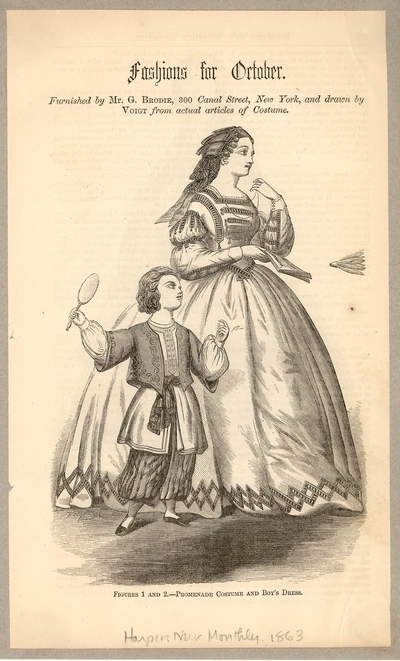
Voigt, Lewis Towson. Fashions for October: Promenade Costume and Boy’s Dress. Wood engraving from Harper’s New Monthly Magazine, v. 27:no. 161 (Oct. 1863), p. 719.
Le Moniteur de la Mode and Godey’s Lady’s Book are precursors of today’s glossy, full-color Cosmopolitan and Vogue. Women’s magazines of the 19th century printed many black & white fashion plates and a few hand-colored ones in each issue. The fashion plates from Harper’s New Monthly Magazine are captioned: “Furnished by Mr. G. Brodie, 300 Canal Street, New York, and drawn by Voigt from actual articles of costume.” You’d probably dash off to Brodie’s and say, “I saw your promenade costume in Harper’s– make me one in green taffeta.” Several plates from Harper’s New Monthly, like this one, can be found in The New York Public Library’s Digital Gallery. You can browse the complete contents of Harper’s New Monthly (from 1850 to 1899) in Cornell University Library’s Making of America Collection.
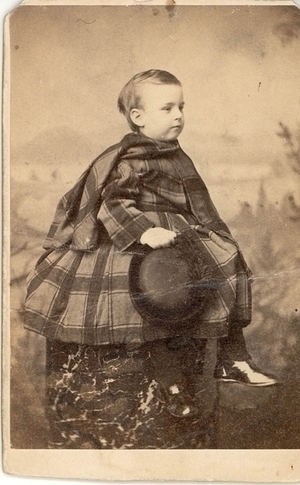
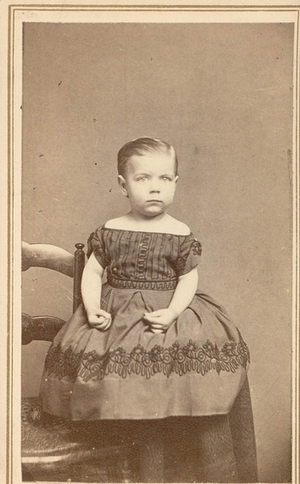
Studio portrait photographs by J. Renowden, Brooklyn NY ; Johnson, Williams & Co., New York NY ; Rintoul & Rockwood, New York NY, et al., circa 1860s.
Studio portrait photographs are valuable sources for costume research. The stiffly-posed children in these pictures are wearing their best (and probably itchiest) dresses. Boys, as well as girls, wear dresses in these photos and engravings.
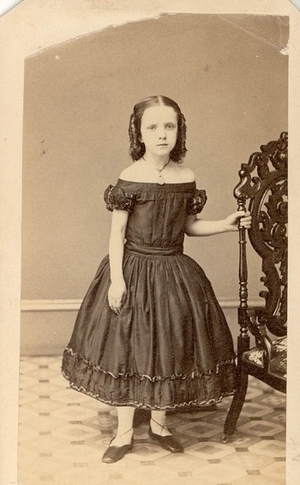
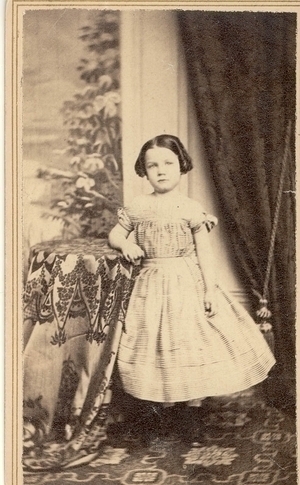
I hope you’ll visit the Library to see this display, and if it sparks your interest in the 1860s, make sure to visit the Civil War Dressing Room on the 4th floor and the 5th floor gallery called A Nation Divided: The Civil War Era.

Beth Kushner has been an assistant librarian at the Brooklyn Museum Libraries and Archives since 1999. She is responsible for cataloging research material and artists' books. She also provides reference services to museum staff and public researchers. She received her Masters degree in Library Science from SUNY Albany.
